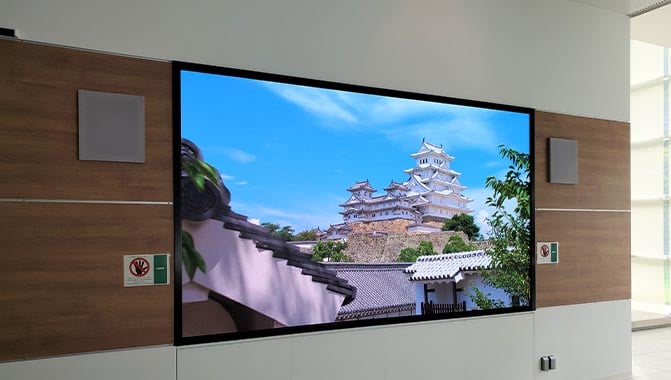A Thorough Analysis of Various LED Display Wall Techniques and Their Uses
A Thorough Analysis of Various LED Display Wall Techniques and Their Uses
Blog Article
Light Emitting Diode video screens are increasingly common across different settings, such as music events, athletic competitions, as well as corporate presentations. These large screens consist of composed of numerous small LED panels that work together to create a cohesive unified image. There are different types of LED video screen technologies available, each with its own features as well as advantages. Grasping these technologies options can assist companies as well as organizations choose the right solution for their particular needs.
A frequent kind of Light Emitting Diode display screen solution is the direct view Light Emitting Diode. Such solution utilizes separate Light Emitting Diode units that are placed near in proximity to create a large display. Direct view Light Emitting Diode screens are recognized for their high luminosity and vibrant hues, which makes them ideal for outdoor activities and well-lit illuminated environments. These displays also have a broad sight angle, which means that viewers can view the display distinctly at different positions. This renders direct view Light Emitting Diode screens a popular choice for stadiums as well as external festivals.
Another kind of Light Emitting Diode video wall solution is the LED illuminated LCD. This technology merges conventional Liquid Crystal Display displays and Light Emitting Diode backlighting to enhance luminosity as well as hue precision. LED illuminated Liquid Crystal Displays are commonly used in indoor environments, including retail malls and conference spaces. These displays provide excellent visual quality while are generally more affordable than direct view LED walls. However, they may often perform as effectively in bright settings, since the illumination can sometimes dull the hues.
A third option is the Organic Light Emitting Diode display screen. OLED technology offers exceptional contrast and color richness in relation to other types of displays. Each pixel in an Organic Light Emitting Diode screen take a look at the site here emits its own light, allowing for true dark tones as well as vibrant colors. This renders Organic Light Emitting Diode video screens particularly attractive for applications that demand premium visuals, including art exhibitions or luxury retail stores. Nonetheless, OLED technology can be more expensive and may often be as luminous as directly viewed Light Emitting Diode screens, rendering it less suitable for outdoor use.
In addition to these technologies, various additionally various applications for Light Emitting Diode display walls. They can be used for promotion, amusement, and information display. For instance, companies often use LED display screens for digital advertising to draw in clients and promote goods. Within amusement, they enhance the visual encounter at music events as well as events, providing lively backdrops and engaging visuals. In corporate settings, LED display screens can be used for presentations, visual meetings, and training programs, aiding to convey information through a aesthetically appealing way.
In conclusion, Light Emitting Diode display walls come in various technologies, each having its unique advantages and uses. Directly viewed LED screens are ideal for external applications, while LED-backlit Liquid Crystal Displays are more appropriate for indoor settings. Organic Light Emitting Diode video walls offer superior visual quality yet may be at a higher price. Understanding these variations can assist organizations make knowledgeable decisions about which kind of LED video screen best meets their requirements, whether for advertising, amusement, or corporate use.